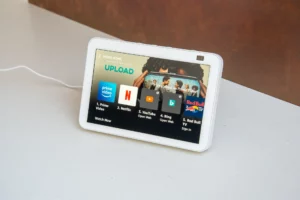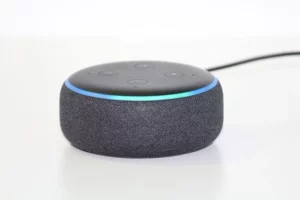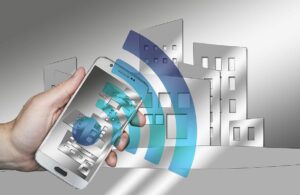We all appreciate the convenience offered by smart devices, but wouldn’t it be even better if we could take a break from our smartphones for a moment? While there are various methods to manage smart devices, one question arises: Can you control Kasa directly from your PC?
Regrettably, there is no official application provided for controlling Kasa from a desktop computer. Nonetheless, there are some alternative approaches you can explore. For instance, you can utilize a Chromebook or iPad to access Kasa’s functionalities. Alternatively, employing voice commands through an Amazon Echo or a similar device could be another option. Furthermore, there exist third-party apps like Apple HomeKit or specialized desktop apps designed explicitly for Kasa, which could come to your aid.
Now, let’s delve into how you can gain control over your Kasa smart devices using your Windows or Mac desktop PC.
What is Kasa?
Kasa, formally known as Kasa by TP-Link, is an intriguing smart tech company that has made significant waves in an already established market. Although known for manufacturing favorite routers, Kasa has ventured into the smart home business with a distinctive approach.

Unlike most smart tech companies that tend to specialize in specific areas such as lighting or cameras, Kasa has chosen to offer a diverse range of competitively priced smart home solutions under one unified banner.
Among their offerings, Kasa provides smart lighting solutions like dimmers, switches, and LED light strips. Additionally, they have developed Ring-like security cameras, including their own smart doorbell, enhancing their product lineup. Moreover, Kasa caters to customers’ needs with smart plugs and outdoor plugs for added convenience.
However, it’s worth noting that Kasa does not currently offer a smart desktop program for controlling their smart devices from a PC. Nonetheless, they have garnered attention for their versatility and comprehensive range of smart home products.
Does Kasa Offer a Desktop Program?
Controlling smart devices through mobile technology has become the norm in the industry. Leading companies like Hue, Google, and Amazon all rely on mobile apps and devices as the primary means to control their smart technologies. Kasa follows a similar approach and, unfortunately, does not provide a desktop program to manage their devices. If you wish to control Kasa products using the Kasa app, you’ll have to do so through their mobile options.
While Kasa lacks an official desktop program, there are alternative methods to control Kasa devices on desktop PCs, which we will explore in detail later in this article.
History of Smart Desktop Software
Smart technology has predominantly focused on providing users with convenient control through mobile devices, eliminating the need to access their PCs. As a result, it has been relatively uncommon for smart brands to develop desktop-ready apps.
Nevertheless, there have been a few exceptions in the market. For instance, Hue offers an app for both Windows and Mac desktops, primarily for their Hue Sync feature. Ring, in the past, also supported desktop applications for both PC and Mac. SmartThings is currently among the brands that offer desktop support, expanding the accessibility of their devices.
Additionally, there are third-party apps available for desktops that provide control over various smart devices, catering to users who prefer managing their devices through their PCs.
However, one notable exception stands out, and that is Apple’s HomeKit. HomeKit operates through iCloud, seamlessly syncing your laptop, iPhone, and even Apple Watch, allowing each device to have control over your home’s smart devices. This comprehensive integration offers users a unified and versatile experience across multiple Apple devices.
Why Many Companies Discontinued Desktop Support?
You’ve made an excellent point about the design philosophy of smart device companies. The primary selling point of smart devices lies in granting users complete control over their homes, even when they are away. Considering this, the most practical device to offer such control is the smartphone, as it is the one most likely to be with users regardless of their location—be it at the office or on a distant beach.

Furthermore, the smartphone remains readily available when users are at home. On the other hand, PCs are typically stationed in specific locations such as offices, bedrooms, or living rooms, making them less convenient for quick and on-the-go control of smart devices.
Considering the user’s perspective, the preference leans towards the convenience of a smartphone app over running to a desktop and booting it up just to perform simple tasks like adjusting lighting or managing smart devices.
Desktop controls for smart devices still have their merits. They offer an additional layer of control, become handy when users don’t have their phones nearby, and can act as crucial backups in case of phone malfunctions. However, it’s evident that desktop smart device controls are not currently a top priority for most companies, given the widespread adoption and usage of smartphones in daily life.
Workarounds For Kasa On Desktop
While there is currently no official app from TP-Link to run Kasa directly on a desktop, there are several workarounds that can provide you with many of the features you desire for controlling smart devices on your desktop computer. These solutions may not be perfect, but they can offer practical alternatives:
Use your Chromebook
Indeed, Chromebooks are unique devices that fall somewhere between a traditional laptop and a tablet, striking an interesting balance in the realm of mobile computing. One of their advantages, especially for our purposes of controlling smart devices, is their compatibility with the Android Play Store.
Chromebooks allow you to install your preferred smart device control apps as long as they have Android support. While these applications might not be fully optimized for Chromebook usage, they still provide significant control over your smart devices, granting you the functionalities you desire.
This option is especially appealing if you primarily work from a laptop, as Chromebooks are capable devices that offer ample coverage while maintaining a lightweight and portable footprint. In fact, you could consider replacing a bulkier laptop with a more agile Chromebook that supports smart device apps, giving you the convenience of controlling your smart home right from your work device.
With the Android Play Store support and the versatility of Chromebooks, you can effectively manage your smart devices without the need for a separate smartphone, further streamlining your smart home control experience.
Break Out Your Echo Show
While the Amazon Echo Show may not be a traditional desktop PC, it offers a substantial amount of the functionality desired for controlling smart devices from a desktop-like experience.

The larger models of Amazon Echo Show, equipped with 10 and 15-inch screens, provide a more comprehensive visual interface compared to regular smartphones. Although they may not replace a full-fledged PC monitor, they do offer a significant level of control and convenience for managing smart devices.
Strategically placing Amazon Echo Show devices around your home, including next to your desktop PC, can enhance the seamless control over your smart devices. This distribution allows you to access smart controls from various locations, reducing the reliance on your smartphone and making the management of smart devices even more effortless.
By utilizing the Amazon Echo Show’s screen and voice assistant capabilities, you can enjoy an efficient and versatile smart home control experience, akin to what you would expect from a desktop computer.
Use Kasa on iPad
Utilizing your iPad to control Kasa and other smart devices is indeed a great option with multiple advantages.
The Kasa app is supported on iPads, providing you with an additional avenue for managing your smart devices. Furthermore, your iPad supports Apple’s HomeKit, which means you can use it to control Kasa as well as other compatible smart devices.
If you tend to keep your iPad in specific areas, such as near your desktop, this becomes a seamless solution for smart device control. With your iPad in close proximity to your work setup, you can conveniently manage your smart home right from your desk without relying solely on a smartphone.
Moreover, integrating your iPad into your home media system allows you to consolidate control over all your smart devices. With your iPad as the central hub for managing various devices, you can avoid the hassle of juggling multiple smartphones and other gadgets when controlling your entire smart home setup.
In summary, leveraging your iPad as a smart device control center offers both practicality and convenience, making it an excellent choice for enhancing your smart home experience.
Try Using Voice Commands
You’ve pointed out a significant reason why people seek desktop applications for controlling Kasa smart devices: the need for an additional point of control for their smart technology. However, one effective workaround to address this issue is by utilizing voice commands through devices like Amazon Echo, Google Nest, or HomePod.

These voice control hubs can be placed anywhere in your home, providing you with the convenience of controlling your smart devices without relying solely on your smartphone. Whether you place one next to your desktop computer, in the kitchen, or even out in the garage, you can easily access smart home controls through voice commands.
It’s true that using voice commands requires some adaptation. You’ll need to familiarize yourself with the types of commands your devices can accept and train the chosen voice assistant on your unique voice. However, with time and practice, you’ll become proficient at using voice commands and seamlessly control your smart home like a pro.
For instance, if you have a Kasa smart plug named “study plug,” you can simply say, “Alexa, turn off my study plug.” Similarly, if you have a Kasa LED lightstrip called “living room light,” you can use the command, “Alexa, set my living room light to orange.”
Adopting voice commands might mean you’ll have fewer screens around the home, which has its pros and cons. While voice commands offer convenience, visually inspecting and adjusting settings on screens can provide more granular control over your smart devices than voice commands alone.
In summary, incorporating voice control hubs into your smart home setup is a practical way to extend control beyond your smartphone and enhance the overall smart home experience.
Using Third-Party Apps
Exploring third-party applications that enable Kasa device control from your desktop is another option to consider. However, it’s essential to understand that these applications are not developed by Kasa or TP-Link, which means their support may vary, and they may not provide the same level of reliability.
It’s worth mentioning upfront that Kasa currently has no plans to create desktop support for their smart applications. As a result, these workarounds, including third-party applications, remain the available solutions until Kasa and TP-Link decide to expand their suite of applications to include desktop support.
For both Mac and PC users, there are third-party applications available to control Kasa devices. One such application is “TPLink Kasa Control” made by the UK company Rewster, specifically designed to work on Windows devices.
Another option involves downloading the Kasa mobile app and running it on your PC or Mac using an emulator. Although this process can be somewhat technical, you can find installation steps for “Kasa Smart App for PC” to guide you through this approach.
Additionally, Apple’s HomeKit and SmartThings offer third-party control over Kasa devices on desktop. These platforms provide further alternatives for managing your Kasa smart devices from your computer.
While there are other applications out there that offer similar functionality, these mentioned options are among the most popular choices for desktop control of Kasa devices.
In conclusion, third-party applications and workarounds provide feasible solutions for controlling Kasa devices from your desktop until official desktop support is introduced by Kasa or TP-Link.
Install A Virtual Machine
VirtualBox is indeed a fantastic software that offers the capability to install various operating systems within Windows. While commonly used by programmers or nostalgic gamers seeking to play older games, it also provides the option to run Android on a virtual machine. As a result, you can effortlessly install the Kasa app and other smart home applications without any difficulties.
To begin, ensure that your BIOS has virtual machine support enabled. Then proceed to install VirtualBox and download the android-x86 virtual machine within it. You can follow video guides available online to help you through the process.
The beauty of this approach, as pointed out by k1kwp in the comments, lies in the fact that you essentially create an Android environment within your Windows computer. It’s like having an Android phone installed as a virtual machine on your PC. This opens up the opportunity to install numerous smart home apps, including Kasa, providing you with a versatile and consolidated smart home control solution.
By setting up an Android virtual machine through VirtualBox, you can conveniently manage your smart devices without the need for a separate smartphone. This solution not only facilitates running the Kasa app but also opens up possibilities for exploring other smart home applications to enhance your home automation experience.
Are There Any Companies Offering Desktop Support?
There are limited options for smart tech companies offering official support for desktop devices. The available choices mainly depend on the operating system of your desktop computer.
Unfortunately, Ring has discontinued support for their desktop app, so that option can be disregarded. Philips Hue, on the other hand, still provides an app for PC and Mac, which offers smart device control on desktop, but beyond that, the options are limited.
For Windows users, Connected Home and Cortana can be configured to control all of your devices. By setting up Connected Home, Cortana becomes a viable means of controlling your smart devices, providing an integrated solution for Windows users.
Mac users can rely on HomeKit for smart device control by simply saying “Hey Siri.” This allows Mac OS desktop computers and laptops to manage their smart devices conveniently through HomeKit.
In addition to the officially supported options, there are the third-party workarounds we mentioned earlier, which grant control over smart devices on desktop. However, using these workarounds may come with the trade-off of not having official support from the smart tech companies, which may affect their reliability and performance.
In summary, the available options for smart device control on desktop depend on the specific operating system of your computer, and users may need to consider official support, third-party workarounds, or integrated solutions like HomeKit and Cortana to manage their smart devices effectively.

You May Also Enjoy Reading: Difference Between Kasa, Tapo and TP-Link

